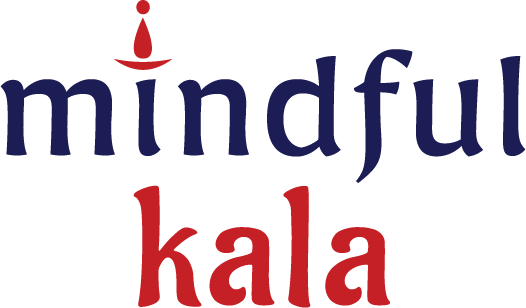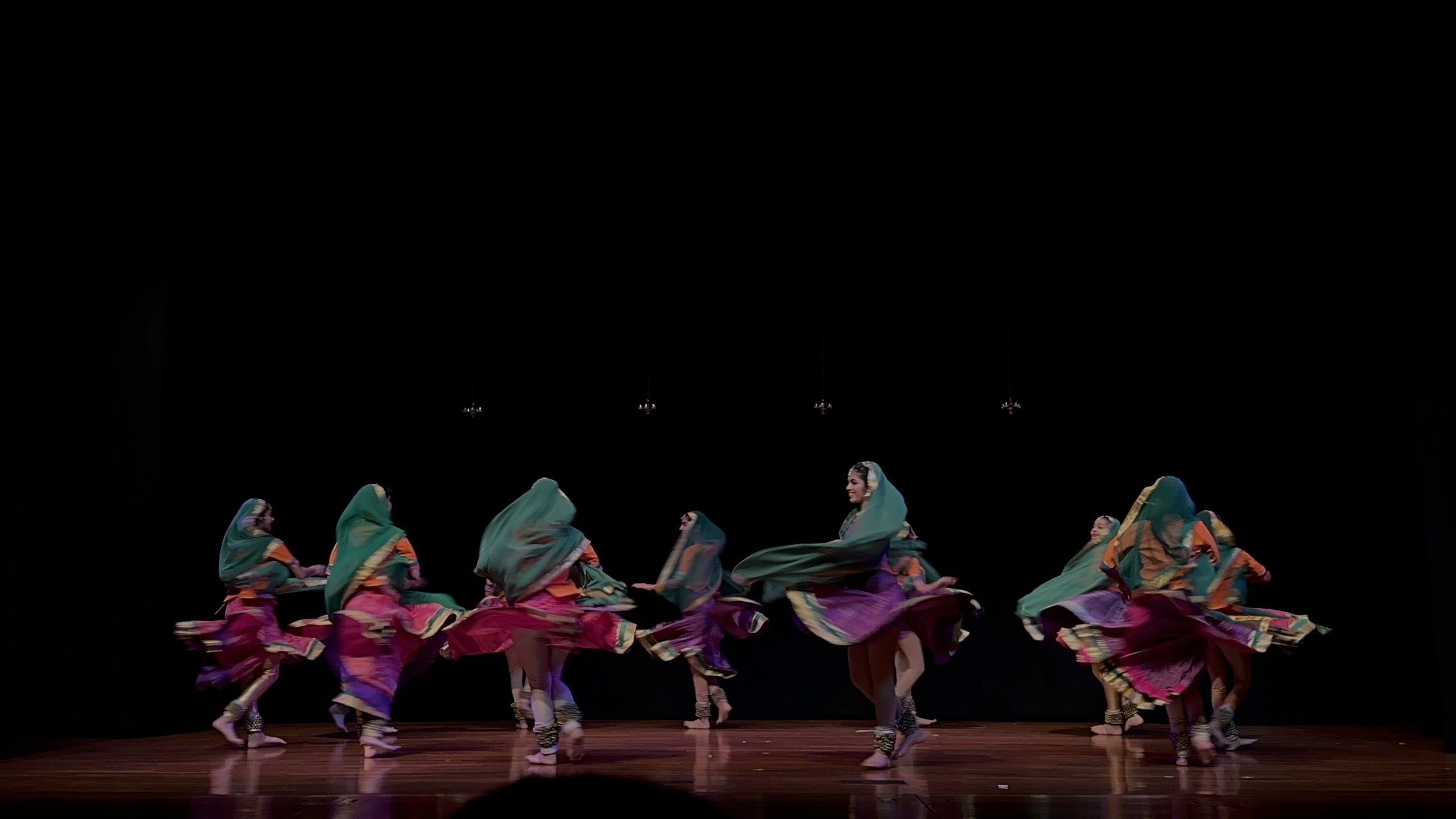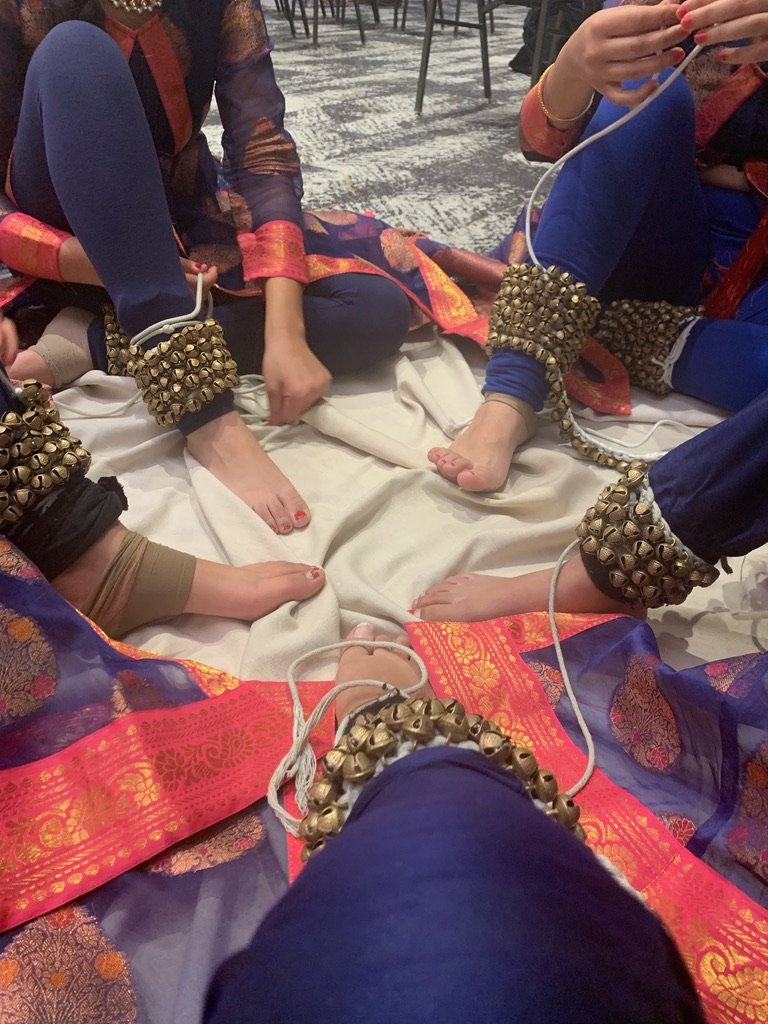Dancing with Mindfulness: My Journey with Kathak
By Reya Lakhani
I began studying Kathak at the age of 7 when my mom was trying to encourage me to participate in some form of dance. When one of our family friends enrolled in Kathak classes, my mom took the opportunity to convince me to join her class. I was reluctant but finally agreed to a trial class, which I found a little boring at first, but was intrigued enough to decide to continue.
Initially, I did not really care or think much of dance - it was just another part of my routine that I mindlessly went through.
“However, over time I found myself enjoying the intricacy of the footwork, the subtlety of the expressions, and the richness of its history.”
As school started to become more stressful and demanding, I found myself looking forward to dance practice even more as it became a way for me to forget about school and simply unwind.
Kathak practice became even more important to me as we went into lockdown because it was a way for me to get off Zoom and release the stress that distance learning often caused.
“During the lockdown, it was difficult to keep in touch with all of my friends, but I was so lucky that the friends and community I had formed in dance class did not go away. ”
We became even closer in quarantine - regularly calling and practicing over video calls with one another. Dance not only provided me with a way to destress but also with a strong community and lasting friendships.
Kathak helped me learn to feel proud of my culture and stay connected to my roots. A few months ago, we performed at an ethnic dance festival. Backstage after the performance, all the different groups were complimenting each other, taking pictures with one another, and just having a great time bonding with people who looked different from them. It was such a beautiful experience to be a part of and reminded me that art is so powerful in bringing people together and can even be used as a vehicle to explore different experiences.
Cultural empathy was one of the many things that drew me to Mindful Kala. Living in such diverse communities, it can be so easy to just focus on our differences and view people who don’t look the same as us as alien.
“I love how Mindful Kala uses Indian culture as a vehicle to discuss experiences that everyone can relate to. ”
A recent experience that united us all was the pandemic, and one of the many unfortunate outcomes of it was the mental health epidemic among teenagers. Our parents, teachers, and the internet are constantly providing us with stress-coping mechanisms, a common one being meditation. Usually, young people view meditation as boring and as something that older people do, but I really appreciate how Mindful Kala presents mindfulness as something fun that everyone, including children and teens, can participate in.




